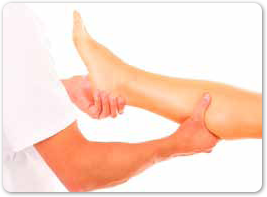
Do you ever feel unbalanced when you walk or run? Have you ever noticed that you look “tilted” to one side in photos? You may have short-leg syndrome, a common condition in which one leg is shorter than the other. Short-leg syndrome can result from either anatomical or functional causes.
Anatomical short-leg syndrome can be the result of several factors: congenital deformity; illnesses that affect limb development in childhood; fractures, dislocations or other injuries; and surgery. Functional short-leg syndrome occurs when muscle imbalance in the legs and hips pull one leg up, causing it to function as if it were shorter than the other. Either form of the syndrome can create various bodily discomforts including fatigue; pain in the back, hips, knees or feet; headaches; and even chewing problems, a result of teeth misalignment.
To ease discomfort, people with short-leg syndrome may lean toward the shorter leg when walking, or bend or arch the foot of the shorter leg down and out, trying to lengthen the leg, while sometimes they flatten the arch on the other “long leg” side. These postural compensations can actually aggravate the problem.
Whether you have short-leg syndrome can be determined by observation of your walking patterns, a series of tests to measure your leg lengths and an examination of your shoes for signs of uneven wear. The treatment of choice, particularly for anatomical short-leg syndrome, is the use of a custom-made orthotic in the shoe. These medical devices are created from a mold of your foot and can be up to a half inch in height. When inserted into the shoe of the shorter leg, the orthotic adds the amount of height needed to equalize leg lengths.
We can help with a treatment plan designed to equalize the leg lengths and maintain postural integrity, particularly if your syndrome is functional. Often, tightness of muscles in the legs causes imbalances that result in one shorter leg. Exercises to strengthen and stretch the tight muscles can help the short leg to function in a more effective and balanced manner.
Once we or your physician have determined that you have short-leg syndrome, we can prescribe an orthotic and design an individual exercise program to improve your posture and help relieve the pain and fatigue caused by the condition. Stretching and strengthening those tight leg and hip muscles will not only affect your gait but your entire body, as well.
















